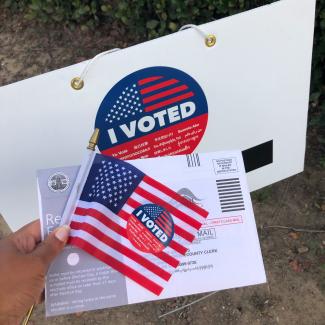
Navigating the Investment Waters During a Presidential Election Year
As a presidential election year rolls around, it's natural for investors to feel a heightened sense of uncertainty. Political campaigns often bring forth promises of change, leading to potential shifts in economic policies and market dynamics. However, history has shown that while presidential elections can create short-term volatility, the long-term impact on investments is often less significant than one might expect.
Understanding the Historical Context
To navigate the investment landscape during a presidential election year, it's essential to consider historical trends. Data analysis suggests that the stock market tends to exhibit increased volatility in the months leading up to the election. This volatility can be fueled by factors such as uncertainty about the future direction of policies, potential changes in regulations, and market speculation.
However, it's crucial to recognize that the market's reaction to elections is often temporary. Over the long term, stock prices are influenced by a myriad of factors, including corporate earnings, economic growth, interest rates, and global market conditions. While election outcomes may lead to short-term fluctuations, the underlying fundamentals of strong companies and diversified portfolios typically drive investment returns over time.
Maintaining a Long-Term Perspective
One of the most important principles of successful investing is to maintain a long-term perspective. Instead of making knee-jerk reactions to election-related news or market fluctuations, investors should focus on their financial goals, risk tolerance, and investment time horizon.
Diversification remains a key strategy for managing risk during periods of uncertainty. By spreading investments across different asset classes, sectors, and geographic regions, investors can reduce their exposure to any single event or market trend. This balanced approach can help cushion the impact of short-term market volatility and position portfolios for long-term growth.
Opportunities Amidst Uncertainty
While presidential election years can create uncertainty in the markets, they can also present opportunities for savvy investors. Market volatility may create buying opportunities for those willing to take a contrarian approach and invest in quality assets at discounted prices.
Moreover, election years often bring forth discussions about economic policies and infrastructure spending, which can benefit certain sectors of the economy. By staying informed about potential policy changes and their implications for different industries, investors can position themselves to capitalize on emerging trends and opportunities.
The Importance of Staying Informed
In today's fast-paced world, information is readily available, but not all of it is reliable or relevant to investors. During a presidential election year, it's crucial to distinguish between noise and meaningful insights that can inform investment decisions.
Seeking guidance from trusted financial advisors and staying informed about economic indicators, market trends, and geopolitical developments can help investors make informed decisions. By remaining disciplined, patient, and focused on their long-term objectives, investors can navigate the twists and turns of a presidential election year with confidence.
Conclusion
Investing during a presidential election year can be a test of patience and discipline. While short-term market volatility may create uncertainty, it's important to remember that elections are just one of many factors influencing investment returns. By maintaining a long-term perspective, staying diversified, and seizing opportunities amidst uncertainty, investors can position themselves for success regardless of who occupies the White House. Ultimately, staying informed, disciplined, and focused on long-term goals is the key to navigating the investment waters during a presidential election year.

